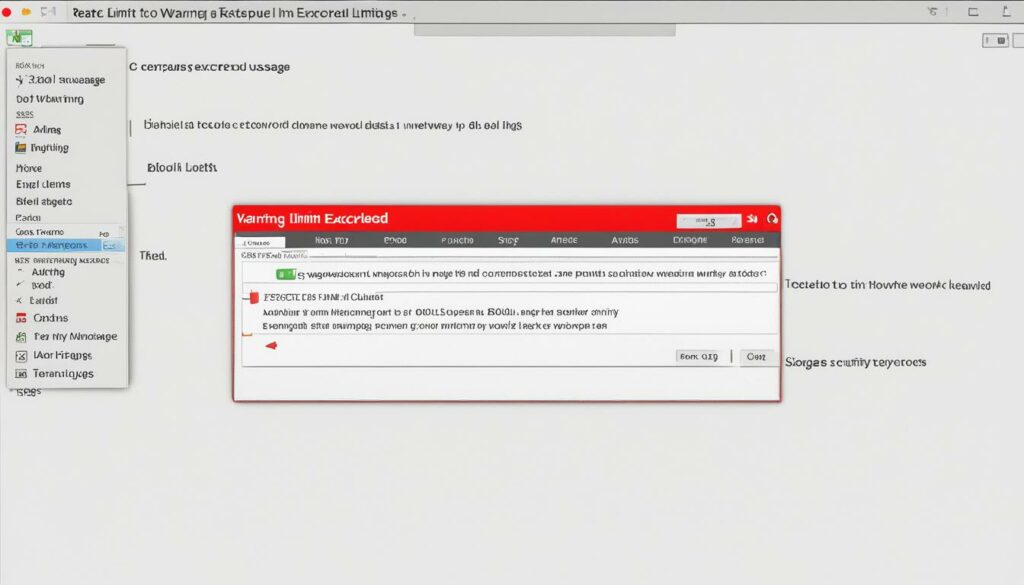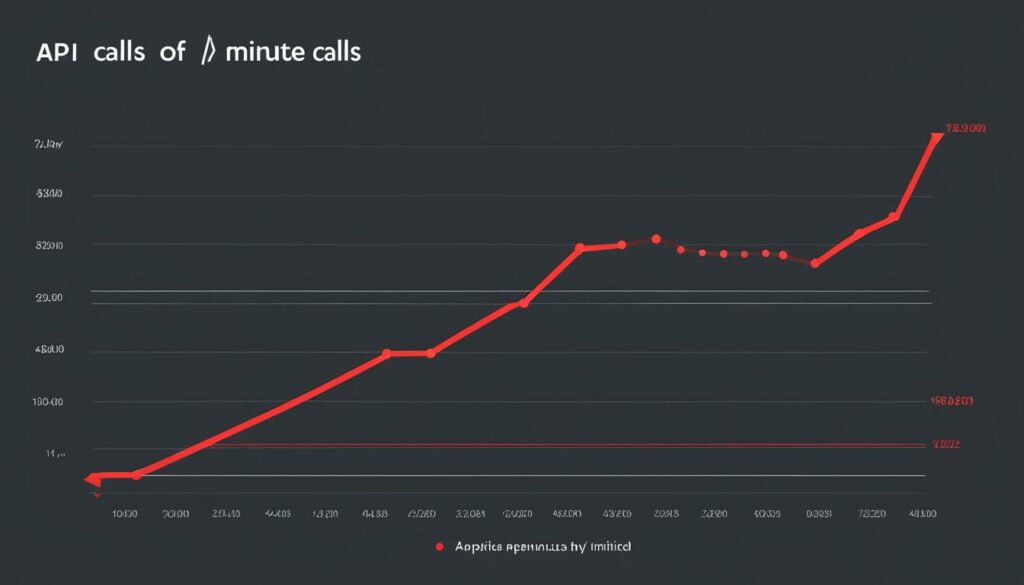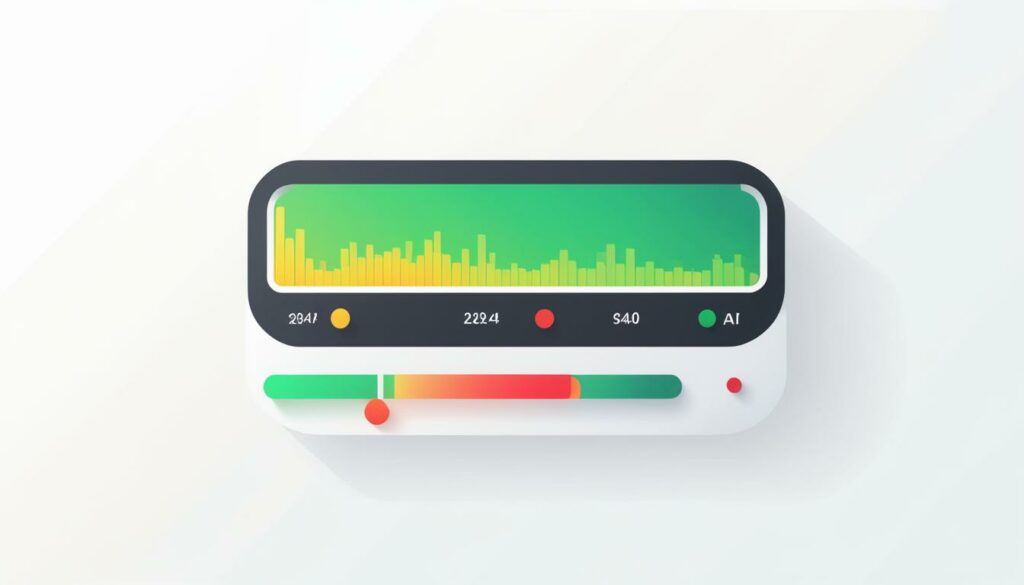Welcome to our article on understanding and managing API rate limiting! In this guide, we will explore the best practices, strategies, and implementation techniques for API rate limiting. Whether you are a developer, an IT professional, or a business owner, understanding API rate limiting is crucial for ensuring the stability and performance of your API system.
API rate limiting is a set of measures put in place to help protect the resources and integrity of your API. It sets limits on the number of requests that can be made within a certain period of time, preventing excessive usage and potential misuse. By effectively implementing API rate limiting, you can save costs, provide reliable performance to your users, and safeguard against malicious attacks and unintentional misuse.
At BoostedHost, we understand the importance of API rate limiting for optimal performance. That’s why we recommend BoostedHost’s WordPress Hosting for your API system. With our specialized hosting solution, you can leverage our robust infrastructure and advanced tools to effectively implement API rate limiting. Sign up now through this link: BoostedHost.
Key Takeaways:
- API rate limiting is crucial for the stability and performance of an API system.
- It helps protect resources, save costs, and provide reliable performance to users.
- API rate limiting prevents malicious attacks and unintentional misuse.
- BoostedHost’s WordPress Hosting is recommended for optimal API rate limiting.
- Sign up now through this link: BoostedHost.
What is API Rate Limiting?
API rate limiting is a crucial mechanism implemented in an API system to ensure its stability and performance. It involves setting limits on the number of requests that can be made within a certain period of time. This limit applies to all actions performed through the API, such as retrieving data, submitting forms, or making updates.
When the number of requests exceeds the defined limit within the specified time frame, the API system enforces rate limiting by returning an error message. This error message, commonly known as “Rate Limit Exceeded,” indicates that the number of requests has surpassed the allowed threshold.
“Rate Limit Exceeded.”
– API system
The purpose of API rate limiting is to protect the underlying infrastructure and ensure a fair distribution of resources. By imposing limits on the number of requests, API rate limiting prevents users or applications from overwhelming the system, causing degradation in performance or downtime.
Image:
Why is API Rate Limiting important?
API rate limiting is important for several reasons:
- Protecting the stability and performance of the API system.
- Preventing malicious attacks, such as DDoS attacks or brute-force attacks.
- Avoiding accidental or unintentional misuse of the API.
Without rate limiting, an API system may be susceptible to excessive traffic, causing it to become unresponsive or even crash. By enforcing rate limits, businesses can ensure a consistent level of service for all users and mitigate the risk of abuse.
How does rate limiting work?
Rate limiting sets restrictions on the number of requests a user or application can make within a certain period of time. This limit is defined by the API provider and can vary based on different factors, such as the user’s subscription tier or the sensitivity of the requested data.
When a user exceeds the rate limit, the API system responds with an error message indicating that the rate limit has been exceeded. It usually includes details on when the rate limit will reset, allowing the user to adjust their request frequency accordingly.
API rate limiting can be implemented using various techniques, such as:
- The token bucket method
- The leaky bucket method
- The fixed window counter
- The sliding window counter
- IP throttling
Each method has its own advantages and disadvantages, and the choice depends on factors like the expected usage patterns and the required granularity of rate limiting.
The Importance of API Rate Limiting
API rate limiting plays a critical role in ensuring the performance and stability of your API system. By setting limits on the number of requests that can be made within a certain time frame, rate limiting helps to avoid downtimes, slow responses, and potential system failures caused by excessive traffic.
Without rate limiting in place, your API system may become overwhelmed by a flood of requests, leading to degraded performance and even complete downtime. This can have a significant impact on user experience, causing frustration and hindering productivity. With rate limiting, you can effectively manage and control the flow of requests to maintain optimal performance and stability.
Rate limiting also acts as a safeguard against malicious attacks. By restricting the number of requests that can be made, you can protect your API system from denial-of-service attacks and other forms of abuse. This helps to ensure that your resources are allocated properly and that your API is available to legitimate users.
Accidental misuse of your API can also put a strain on system resources and impact performance. Rate limiting prevents unintentional excessive usage, saving you from unnecessary costs and potential data loss. It helps to enforce fair usage policies and ensures that everyone has equal access to your API resources.
Moreover, rate limiting plays a critical role in mitigating security risks. By controlling the rate of requests, you can prevent potential vulnerabilities and reduce the risk of unauthorized access to sensitive data. This helps to protect your system and safeguard the privacy of your users.
Implementing API rate limiting can lead to significant cost savings for your business. By preventing excessive usage and ensuring efficient resource allocation, you can optimize your infrastructure and minimize unnecessary expenses. Rate limiting enables you to make the most out of your resources, providing reliable performance while keeping costs under control.
Key Benefits of API Rate Limiting:
- Ensures optimal performance and stability of your API system
- Prevents downtime and slow responses caused by excessive traffic
- Protects against malicious attacks and abuse
- Prevents accidental misuse and saves costs
- Mitigates security risks and protects sensitive data
- Enables efficient resource allocation for cost savings
To illustrate the importance of API rate limiting, consider the following scenario:
You have developed a popular mobile application that relies heavily on an API to retrieve and update data. Without rate limiting in place, your API quickly becomes overwhelmed by a sudden surge in user activity. As a result, your API’s performance is severely degraded, responses are slow, and some requests even time out. This leads to frustrated users, negative reviews, and a significant loss in your application’s credibility. By implementing API rate limiting, you can prevent such situations and provide a seamless experience for your users.
In the next section, we will explain what happens when the API rate limit is exceeded and how it affects users.
What does “API rate limit exceeded” mean?
“API rate limit exceeded” is an error message that appears when you make more requests than the limit set by the API system within a specific time frame. It indicates that you have sent too many requests within a short period of time. As a result, some or all of your requests will not be processed. You will need to wait for the rate limit to reset or try again later.
Exceeding the API rate limit can happen when you send a large number of requests consecutively, causing the API system to reach its capacity. This limit is imposed to prevent abuse, maintain system stability, and ensure fair usage for all users. By setting a rate limit, API providers can manage the flow of requests and allocate resources efficiently.
Receiving the “API rate limit exceeded” error message can be frustrating, but it serves as a reminder to adhere to the rate limit defined by the API provider. It helps maintain the overall performance and reliability of the API system, benefiting all users. Understanding and respecting the rate limit is essential for effective utilization of APIs and a smooth user experience.

API rate limits are typically defined in terms of requests per minute, hour, or day, depending on the API provider’s specifications. The specific time frame and the number of requests allowed within that time frame may vary depending on the API and its purpose.
To avoid encountering the “API rate limit exceeded” error, make sure to keep track of the rate limit imposed by the API provider. Consider implementing strategies such as delaying or spacing out your requests to stay within the allowed limit. This will ensure a smoother interaction with the API and minimize the risk of having requests denied due to rate limit violations.
API Rate Limiting Best Practices
To ensure the successful implementation of API rate limiting, it is important to follow best practices that optimize usage, improve performance, and provide a better user experience. Consider the following recommendations:
1. Assess Call Frequency
Evaluate the size and scope of your API call frequency to optimize resource consumption and prevent unnecessary costs. By understanding your API usage patterns, you can effectively manage your rate limits and avoid exceeding your allocated limits.
2. Analyze Traffic Patterns
Perform regular traffic analysis to identify potential bottlenecks and areas for optimization. By understanding your API’s traffic patterns, you can make informed decisions on performance improvements, such as optimizing code or caching frequently accessed data.
3. Monitor API User Activity
Stay vigilant and monitor API user activity to detect abuse or abnormal behavior. Implement mechanisms to identify suspicious or malicious activities, and maintain a list of trusted users or services to ensure fair access and protect your API resources.
4. Set Appropriate API Timeouts
Establish appropriate timeouts for your API requests to provide a better user experience. By configuring timeouts, you can prevent requests from hanging indefinitely, allowing your API to quickly respond to valid requests and avoid unnecessary resource consumption.
5. Utilize Caching
Implement caching strategies to improve response times and reduce the load on your API. By caching frequently requested data or responses, you can serve them directly from memory, minimizing the need for repeated processing and enhancing overall performance.
6. Provide Feedback on Rate Limit Errors
Transparently communicate rate limit errors to API users by providing informative and actionable feedback. Clear error messages help users understand the reason for the limitation and guide them on how to adjust their requests accordingly.
7. Have a Backup Plan
Prepare for high-traffic periods by having a backup plan in place. Adopt strategies to handle increased load effectively, prioritize critical operations, and ensure uninterrupted service delivery during peak usage. Consider deploying additional server capacity or implementing a scalable infrastructure to meet demand.

“Implementing best practices in API rate limiting is paramount for optimizing usage, enhancing performance, and ensuring a seamless user experience. By assessing call frequency, analyzing traffic patterns, monitoring user activity, setting appropriate timeouts, utilizing caching, providing feedback on rate limit errors, and having a backup plan, you can effectively manage API rate limiting and drive the stability and success of your API.”
API Rate Limiting Examples
Now let’s take a look at some examples of API rate limiting in action. Popular platforms like Facebook, Twitter, and Google Maps have implemented effective rate limiting strategies to ensure stability, security, and fairness for their users.
On Facebook, rate limits are set to control the number of API requests a user can make within a specified time interval. These predefined limits help prevent abuse, protect resources, and maintain a smooth user experience. By implementing rate limiting, Facebook ensures fair usage of their APIs and prevents any single user from overwhelming their system.
Twitter takes a dynamic approach to rate limiting by adjusting the limits based on usage patterns. This allows them to account for fluctuating levels of activity and allocate resources accordingly. By dynamically managing rate limits, Twitter can provide a reliable and scalable API experience for its users while effectively preventing abuse and ensuring system stability.
Google Maps
Google Maps utilizes rate limiting to manage API usage and avoid unexpected charges. By setting limits on the number of requests, Google Maps prevents excessive usage and protects against abuse. This not only ensures fair access to their services but also helps users stay within their billing plans and agreements.
“Rate limiting is crucial for platforms like Facebook, Twitter, and Google Maps to ensure stability, security, fairness, and compliance with billing plans and agreements.”
These examples demonstrate how API rate limiting is implemented by different platforms, each tailored to their specific needs and requirements. The goal is to maintain a stable and secure environment, prevent abuse and malicious attacks, and provide a fair and reliable experience for all users.
| Platform | Rate Limiting Approach | Benefits |
|---|---|---|
| Predefined limits per user | Prevent abuse, protect resources, maintain a smooth user experience | |
| Dynamic adjustment based on usage patterns | Reliable and scalable API experience, effective prevention of abuse | |
| Google Maps | Manage usage and prevent unexpected charges | Fair access to services, compliance with billing plans and agreements |

By observing these examples, it becomes evident that API rate limiting is a vital component for platforms to ensure stability, security, fairness, and compliance with billing plans and agreements. Now that we’ve seen how API rate limiting is implemented by these industry-leading platforms, let’s explore the various methods for implementing rate limiting ourselves.
How to Implement API Rate Limiting
When it comes to implementing API rate limiting, there are several methods you can choose from based on the specific needs and requirements of your API system. Each method has its own approach and advantages. Let’s explore some of the most commonly used implementation methods:
1. Token Bucket Method
The token bucket method is a popular approach to rate limiting. It restricts the number of requests a user can make by assigning each user a “token bucket” of requests they are allowed to send. Users consume tokens from their bucket with each request made. If the bucket is empty, further requests are denied until it is refilled. This method provides a flexible mechanism to control the rate of requests and ensure fair usage.
2. Leaky Bucket Method
The leaky bucket method is another approach to rate limiting. In this method, a fixed-size bucket is used to hold requests. Requests are deducted from the bucket at a constant rate, mimicking a leak. If the bucket becomes empty before a request is made, further requests are denied. This method helps to regulate the rate of requests evenly over time and prevent sudden bursts of traffic.
3. Fixed Window Counter
The fixed window counter method limits the number of requests allowed within a fixed time window. For example, you can set a rate limit of 100 requests per minute. If the number of requests exceeds the limit within that minute, further requests will be denied until the window resets. This method provides a straightforward way to control the rate of requests in a specific time frame.
4. Sliding Window Counter
The sliding window counter method is similar to the fixed window counter method but operates on a sliding time window. Instead of resetting at a fixed interval, the window continually slides forward as time passes. This allows for more flexibility in rate limiting, as requests are allowed based on recent history rather than a fixed time frame.
5. IP Throttling
IP throttling is a method that limits the rate of requests made from a single IP address. By restricting the number of requests coming from an IP address within a certain time frame, you can prevent abuse or excessive usage from a particular source. This method is particularly useful for preventing malicious attacks or ensuring fair usage among multiple users.
Choosing the right implementation method depends on your specific needs and the characteristics of your API system. You may even combine multiple methods for more granular control over the rate of requests. It’s important to consider factors such as fairness, performance, and security when deciding which method to use.
Implementing API rate limiting effectively can greatly enhance the stability and performance of your API system, protect against abuse and malicious attacks, and provide a better user experience.

Now that you understand the different implementation methods for API rate limiting, you can choose the one that best suits your needs and ensure optimal performance for your API system.
Rate Limiting in Microservices Architecture
Rate limiting plays a crucial role in microservices architecture, ensuring efficient management of request rates between services. In various scenarios, rate limiting helps prevent potential issues and maintain optimal performance. Let’s explore how rate limiting is applied in different services within a microservices architecture.
User Management Service
In the user management service, rate limiting acts as a safeguard against brute force attacks and unauthorized access attempts. By setting appropriate limits on the number of requests that can be made within a given time frame, rate limiting prevents malicious actors from overwhelming the system and compromising user accounts.
Product Catalog Service
In the product catalog service, rate limiting plays a crucial role during periods of high demand or sudden traffic spikes. By implementing rate limiting, the system can prevent overload and ensure consistent performance, even when there is a significant increase in requests for product information or availability.
Order Processing Service
Rate limiting is particularly important in the order processing service to ensure the smooth flow of operations. By setting appropriate limits on the rate of incoming requests, the service can avoid being overwhelmed and maintain reliable delivery of orders. Effective rate limiting helps prevent one service from monopolizing resources and impacting the overall order processing system.
Payment Processing Service
Similar to the order processing service, rate limiting in the payment processing service helps ensure fairness and optimal performance. By implementing rate limits, the service prevents any individual client or process from overwhelming the payment processing system. This ensures that all payment requests can be handled promptly and efficiently, without causing delays or issues with payment processing.
Rate limiting can be implemented at different levels within a distributed microservices environment. It can be applied at the service level, ensuring each individual service has its own rate limits, matched to its specific needs. Rate limiting can also be implemented at the API gateway level, allowing for centralized management of rate limits across multiple services. Additionally, rate limiting can be enforced at the client level, enabling fine-grained control over the rate of requests sent by each client application.
Implementing appropriate rate-limiting strategies within a microservices architecture helps promote stability, reliability, and fair resource utilization. By preventing denial-of-service attacks, protecting against overload, and ensuring equitable access to services, rate limiting enables an optimized and efficient microservices ecosystem.
Rate Limiting Libraries: Tools to Manage Traffic
When it comes to implementing rate limiting in your web applications, you’re in luck! There are several rate limiting libraries available across different programming languages that can help you effectively manage and control traffic. These libraries provide convenient tools to ensure that your application remains stable and performs optimally. Let’s take a closer look at some of the popular rate limiting libraries:
Express-rate-limit
If you’re working with Node.js and using the Express framework, Express-rate-limit is a simple and easy-to-use rate limiting middleware. It allows you to set limits on the number of requests that can be made to your Express routes within a specific time period. With Express-rate-limit, you can protect your application from excessive requests and maintain its stability and performance.
Ratelimiter
Ratelimiter is another powerful rate limiting library for Node.js. It utilizes Redis, an in-memory data store, to implement distributed rate limiting. With Ratelimiter, you can effectively manage and control the rate of requests across multiple servers or instances of your application. By distributing the rate limiting mechanism, Ratelimiter helps prevent overload and ensures the scalability and reliability of your application.
django-ratelimit
If you’re working with Django, a popular web framework in Python, django-ratelimit is a rate limiting library specifically designed for Django applications. With django-ratelimit, you can easily implement rate limiting logic in your views or API endpoints. It provides you with the flexibility to set limits based on various factors such as IP address, user, or globally. django-ratelimit empowers you to protect your Django application from abuse or malicious activities while maintaining its performance and stability.
These rate limiting libraries are just a few examples of the tools available to help you manage and control traffic in your web applications. By incorporating these libraries into your development process, you can effectively protect your resources, prevent abuse, and ensure the stability and reliable performance of your application.
Remember, implementing rate limiting is crucial for optimizing your application’s performance and protecting it from potential security risks. So, take advantage of these rate limiting libraries and start managing your traffic effectively!
| Rate Limiting Library | Supported Language/Framework | Key Features |
|---|---|---|
| Express-rate-limit | Node.js with Express | Simple and easy-to-use middleware for rate limiting in Express routes |
| Ratelimiter | Node.js | Uses Redis for distributed rate limiting across multiple instances |
| django-ratelimit | Django (Python) | Rate limiting library specifically designed for Django applications |
Conclusion
In conclusion, managing API rate limiting is essential for ensuring the stability and performance of your API system. By implementing best practices, such as assessing call frequency, monitoring user activity, and utilizing caching, you can effectively manage rate limiting and protect your resources. API rate limiting plays a vital role in preventing excessive requests, abuse, and malicious attacks, ultimately improving the overall user experience.
In a microservices architecture, rate limiting is crucial for maintaining the balance of requests between services. It helps prevent overload, ensures fair usage, and avoids one service overwhelming another. By implementing rate limiting at the service level, API gateway level, or client level, you can effectively manage the rate of requests and maintain optimal performance.
Additionally, there are various rate limiting libraries available, such as Express-rate-limit, Ratelimiter, and django-ratelimit, which provide convenient tools for implementing rate limiting in your web applications. These libraries offer effective solutions and help you easily manage and control the traffic to your API.
FAQ
Q: What is API rate limiting?
A: API rate limiting is a set of measures put in place to limit the number of requests that can be made to an API within a certain period of time. It helps to ensure the stability and performance of the API system by preventing excessive requests.
Q: Why is API rate limiting important?
A: API rate limiting is important because it helps to protect the stability and performance of an API system. It prevents downtime and slow responses by limiting the number of requests that can be made. It also helps to prevent malicious attacks and accidental misuse of the API. Additionally, rate limiting helps to mitigate security risks and prevent data loss.
Q: What does “API rate limit exceeded” mean?
A: “API rate limit exceeded” is an error message that appears when the number of requests a user makes exceeds the limit set by the API system within a certain time frame. It indicates that too many requests were sent in too short of a time period. Some or all requests will not be processed, and the user will need to wait for the rate limit to reset or try again later.
Q: What are some best practices for API rate limiting?
A: Some best practices for API rate limiting include assessing call frequency to optimize usage, analyzing traffic patterns to identify potential bottlenecks, monitoring API user activity to identify abuse, setting appropriate API timeouts for better user experience, utilizing caching to improve response times, providing feedback on rate limit errors for transparency, and having a backup plan for handling high-traffic periods effectively.
Q: Can you provide examples of API rate limiting?
A: Examples of API rate limiting can be seen in popular platforms like Facebook, Twitter, and Google Maps. Facebook sets predefined limits on the number of API requests per user within a specified time interval. Twitter dynamically adjusts rate limits based on usage patterns. Google Maps uses rate limiting to manage usage and prevent unexpected charges.
Q: How can I implement API rate limiting?
A: There are several methods for implementing API rate limiting, including the token bucket method, leaky bucket method, fixed window counter method, sliding window counter method, and IP throttling. The specific method you choose depends on the needs and requirements of your API system.
Q: How does rate limiting work in microservices architecture?
A: In microservices architecture, rate limiting plays a crucial role in managing the rate of requests between services. It helps to prevent overload and maintain the balance of requests during high-demand periods. Rate limiting can be implemented at the service level, API gateway level, or client level in a distributed microservices environment.
Q: Are there any rate limiting libraries available?
A: Yes, there are various rate limiting libraries available across different programming languages. Some popular examples include Express-rate-limit for Node.js, Ratelimiter for Node.js with Redis, and django-ratelimit for Django applications in Python. These libraries provide convenient tools for implementing rate limiting in web applications.












